Shit Gets Real – 9 Dung Spiders and their Remarkable Mimicry
From years of trudging through forests, I have learnt not to casually dismiss any pile of poop in the foliage. With experience and a keen sense of observation, some of these piles of excrement could actually turn out to be devious little dung spiders, sometimes also known as bird dropping spiders!
p/s: This post will be updated whenever I find new poop spiders.
Living its life as a pile of poop may sound shitty, but the facade is actually an ingenious predatory and defensive tactic.
Predatory tactic
Excrement from birds, lizards and other vertebrates are an excellent source of food and nutrients for some insects, especially flies and some bugs. Dung spiders capitalize on this attraction with its crap-like exterior and reinforces its deception by remaining motionless for hours just like a true piece of poop.
It had been popularly spread on the internet that these bird dung spiders not only looked like shit, but they smelt like shit as well. The scent may not be easily detected by a human, and there had not been any real evidence of such a notion. Hence in 2015, a group of scientists from Hubei University, China performed a series of experiments to prove that volatile chemical cues helped the spider to repel predators and to attract prey.
Defence tactic
The crappy disguise also protects the spider from birds and other predators that normally would not consider eating its own poop.
In this photo series, I have consolidated some of the common poop-like genera of spiders from Southeast Asia (mostly Singapore): Pasilobus and Phrynarachne. Cyrtarachne had traditionally been called bird-dropping spiders, so there would be a brief mention at the end of the post. Spiders from these genera are mimics of poop / faeces / dung / excrement / shit / bird dropping to various degrees.
Bird dung spider (Pasilobus sp.)
Most dung-mimics sport a wet and lumpy surface to resemble fresh bird excrement. At rest, they draw their legs close to their bodies to conceal its shape and would lie motionless for hours in the day. This is probably the best poop-mimic, hence the title “King of Poop”.
Poop
This shit is real. Not a spider. Just to highlight the knobbly, wet appearance of fresh poop!
Bird dung spider (Pasilobus sp.)
Younger specimens may come in various shades of brown. The easiest way to differentiate real poop from a spider, is that real poop would never be symmetrical while spiders should show distinct symmetry.
Bird dung spider (Pasilobus sp.)
Anterior view shows the face of the predator where the legs are more obvious while the poop illusion is less convincing.
Bird dung spider (Pasilobus sp.)
By nightfall, the Pasilobus weaves one of the most bizarre traps, unlike any other in the orb weaving family Araneidae. It builds a row of sticky U-shaped strands of silk that ensnares prey that might have been flying close to or towards the spider. One end of each strand of silk is secured tightly, while the other end is loosely attached. When a prey is trapped by the sticky silk, the loose end is easily dislodged and the spider pulls the silk with prey towards it from the anchored end.
Bird dung spider (Pasilobus sp.)
Legs tugging at the lines of silk to detect any trapped prey on its web.
Bird Dung Spider (Pasilobus sp.)
The lines of silk are coated with sticky globules for trapping prey.
Bird Dung Spider (Pasilobus sp.)
Pasilobus is nocturnal and builds its web only at night. At daybreak, it consumes its web and sticky globules slowly, careful not to waste any bit of it.
Bird dung spider (Pasilobus sp.)
After dismantling its web, the dung spider returns to its motionless poop disguise to avoid detection by predators.
Poop
Another piece of dung for comparison. I found myself photographing poop for several months!
Bird dung spider (Pasilobus sp.)
Interestingly, the abdominal warts and muscular depressions appeared to fluoresce brightly under ultraviolet. It might have served as an additional attractant for unsuspecting prey!
Bird dung spider (Pasilobus sp.)
Exceptional brilliance under ultraviolet light transforms the poop into an exotic precious stone.
Bird dung spider (Pasilobus sp.)
Not all species of Pasilobus are as lumpy as the one described earlier. Some are smoother but there is little doubt that they are dung-mimics.
Bird dung spider (Pasilobus sp.)
Despite being at rest without its web, this dung spider was seen to be consuming the last bits of its prey. This reinforces the theory that it could still attract prey while at rest.
Bird dung spider (Pasilobus sp.)
Beautiful colors for a poop-mimic! Locally, some of us called this the bak-zhang (rice dumpling) spider.
Bird Dung Crab Spider (Phrynarachne sp.)
This dung mimic crab spider does not weave any web, and relies heavily on attracting prey to it. Ambush predation is typical for spiders in the crab spider family, Thomisidae. Locally, we have been calling this the peanut dung spider because of its resemblance to sticky peanut bars.
Bird Dung Crab Spider (Phrynarachne sp.)
The spider’s fore-legs are long, stout, heavily spined, and are excellent for ensnaring prey.
Bird Dung Crab Spider (Phrynarachne sp.)
A creepy little 3D animation created using a multiple-shot stack.
Bird Dung Crab Spider (Phrynarachne sp.)
As a show of threat, the dung spider raises its fore-legs and lifts its body for extra height.
Bird Dung Crab Spider (Phrynarachne sp.)
This dung spider was found in Singapore, and looks superficially like the previous peanut dung spider. It lacks the extreme lumpy surface on its abdomen, but bears numerous tubercles, most notably the two posterior projections.
Bird Dung Crab Spider (Phrynarachne sp.)
Like all other dung mimics, this Phrynarachne looks particularly wet, simulating the look of fresh excrement.
Bird Dung Crab Spider (Phrynarachne sp.)
These crab spiders can get pretty aggressive with its powerful fore-legs. I’ve only seen this species once and hope to see it again.
Bird-Dropping Crab Spider (Phrynarachne sp.)
This dung spider specializes in creating a “splatter” of silk, and sits on it, simulating the white stain caused by the bird-droppings when splashed on a leaf. This species is probably Phrynarachne decipiens or one close to it. We found this species in Borneo Bootcamp 2015, and hope to see it again in the next Bootcamp!
Bird-Dropping Crab Spider (Phrynarachne sp.)
The splatter is sometimes made out of ensnared prey (in background), which the spider keeps for later consumption.
Poop
Another piece of poop for comparison. Unfortunately I kept forgetting to take photos of the poop splatter.
Bird dung crab spider (Phrynarachne sp.)
Another different color morph of this species.
Bird dung crab spider (Phrynarachne sp.)
The leg spines are incredibly dense and stout.
Bird dung crab spider (Phrynarachne sp.)
Just for fun, a posterior view of its abdomen with a close-up of the four red tubercles and cute spinnerets.
Bird dung crab spider (Phrynarachne rugosa)
From the jungles of Madagascar, we found this tiny little bird poop crab spider resting motionless on a leaf.
Bird dung crab spider (Phrynarachne rugosa)
It was difficult to tell that it is a spider without going down at eye level with the poop spider.
Bird dung crab spider (Phrynarachne sp.)
Also from Madagascar, this little black poop was found at night.
Bird dung crab spider (Phrynarachne sp.)
It was so cryptic that even with a close-up, it was difficult to see the positions of the eyes.
Bird dung crab spider (Phrynarachne sp.)
A distinctive species, this is probably Phrynarachne ceylonica. It doesn’t really look like bird dung on its own, but the disguise is more believable when it sits on its radiating nest which looked like a bird dropping splatter.
Bird dung crab spider (Phrynarachne sp.)
This is probably also the species used in the study to test the effects of the spider’s chemical cues to attract prey.
Bird dung crab spider (Phrynarachne sp.)
Always ready to grab nearby prey, with its legs spread open.
Bird dropping spider (Cyrtarachne sp.)
This species was popularized by my video last year on the Mystery of the Pulsating Spider, and is most probably Cyrtarachne inaequalis.
Bird dropping spider (Cyrtarachne sp.)
Traditionally known as a bird dropping spider, but photos taken from this angle seems to suggest that it mimics a snake’s head instead.
Poop #1: King of Poop
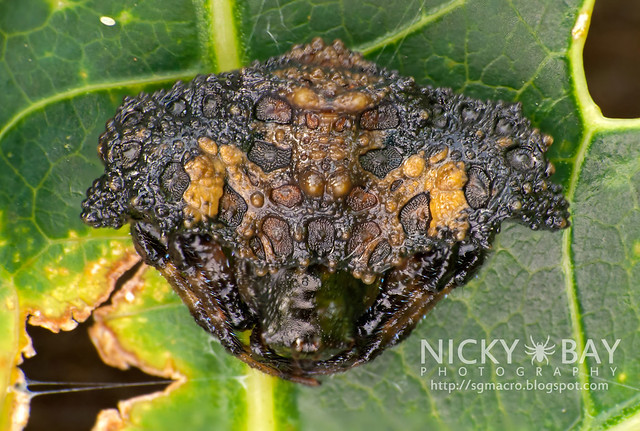
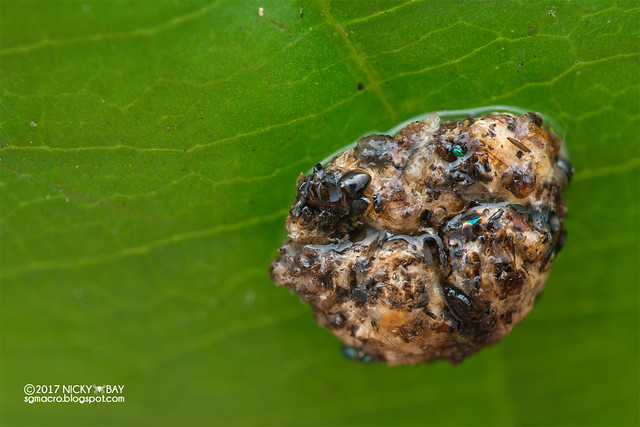
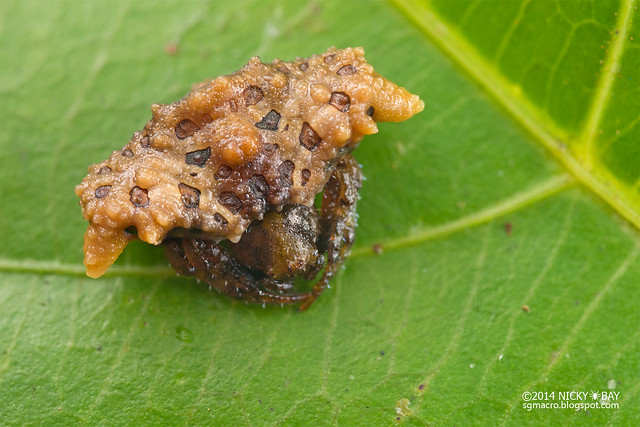
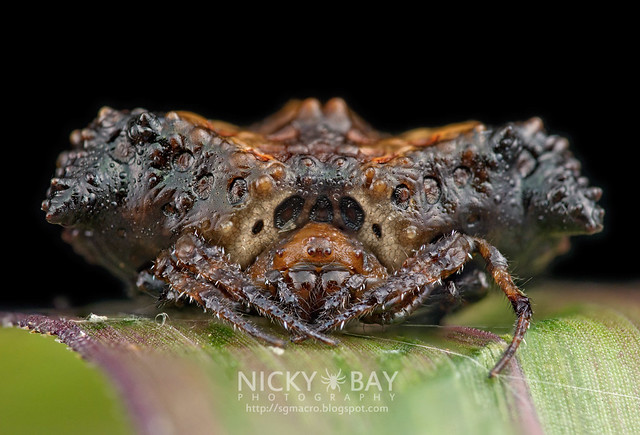

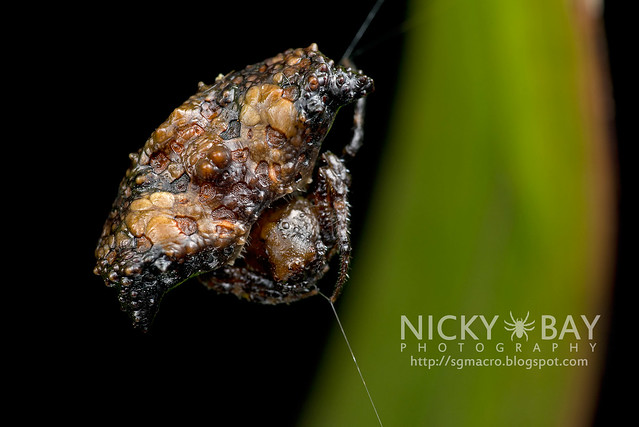
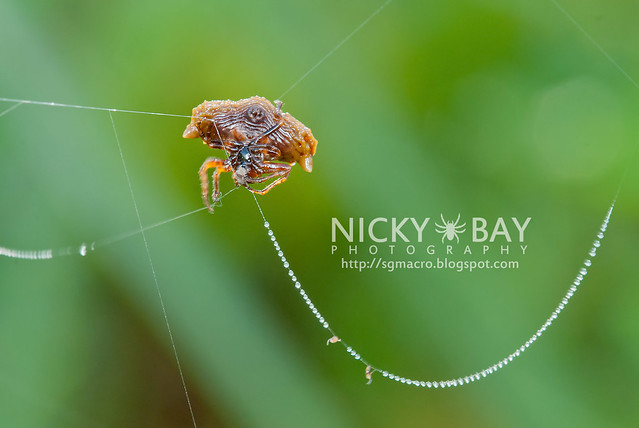
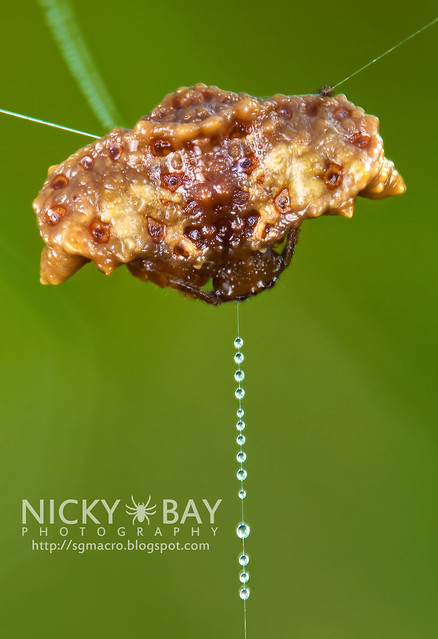
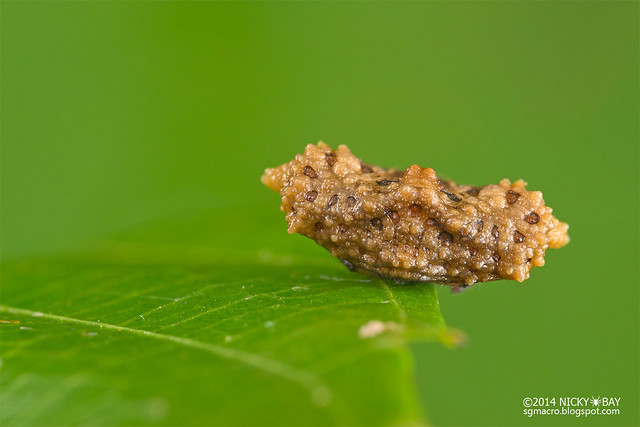
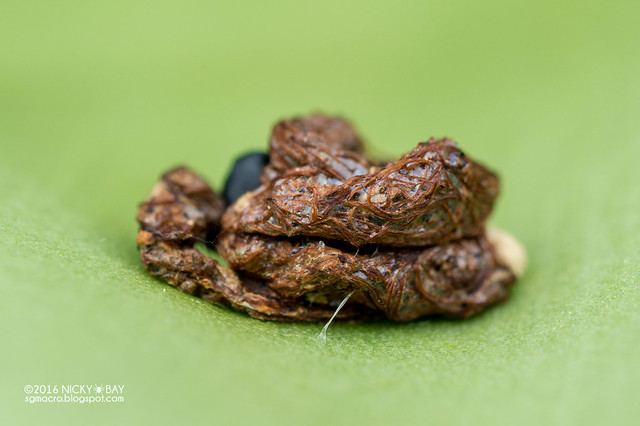
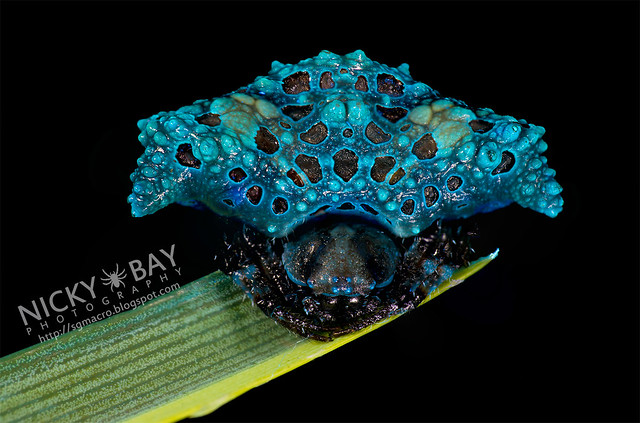
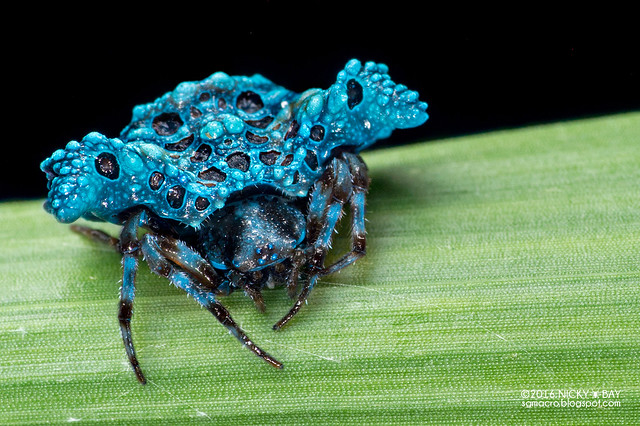
Poop #2: Golden Poop
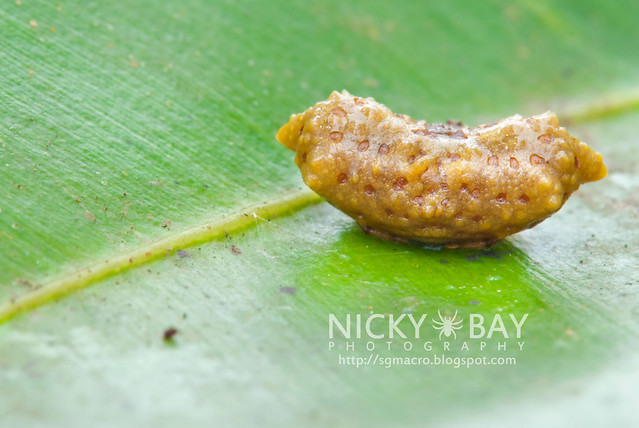
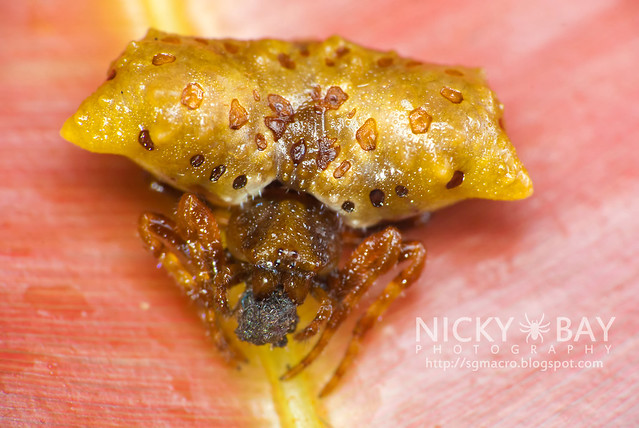
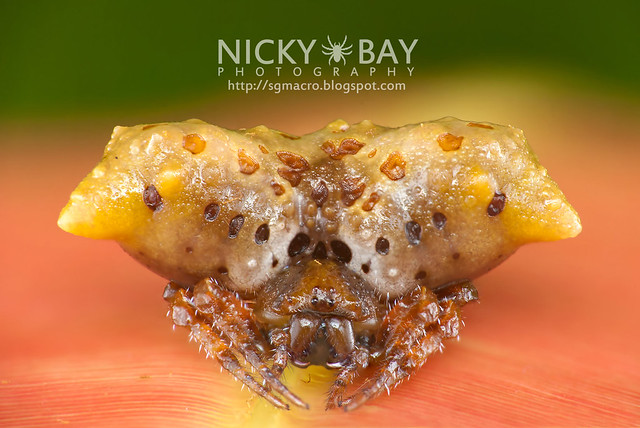
Poop #3: Peanut Poop
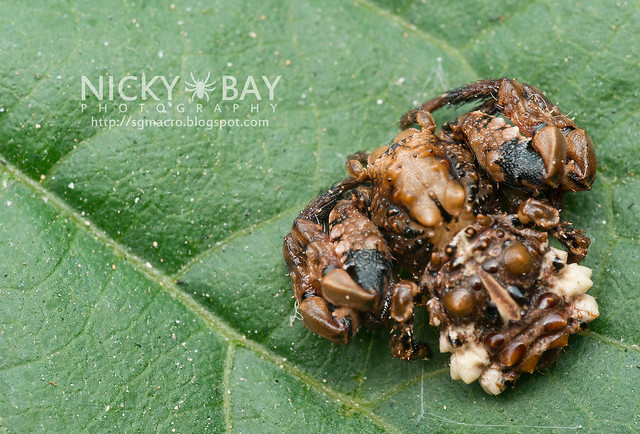
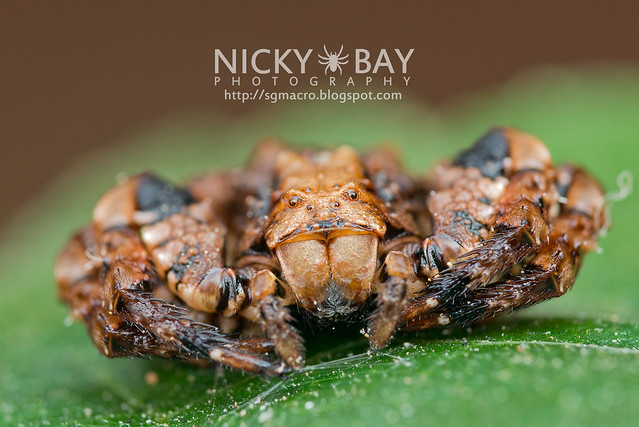
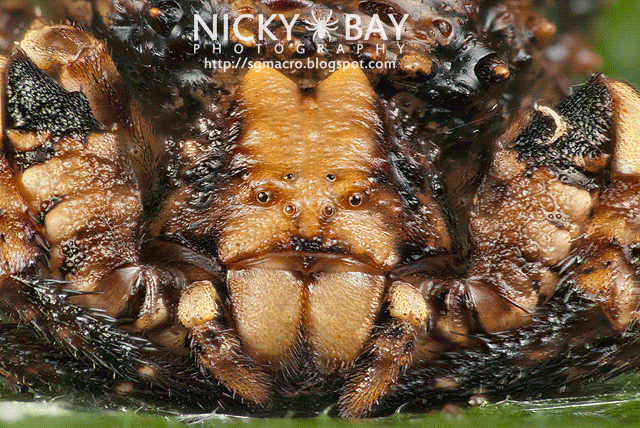
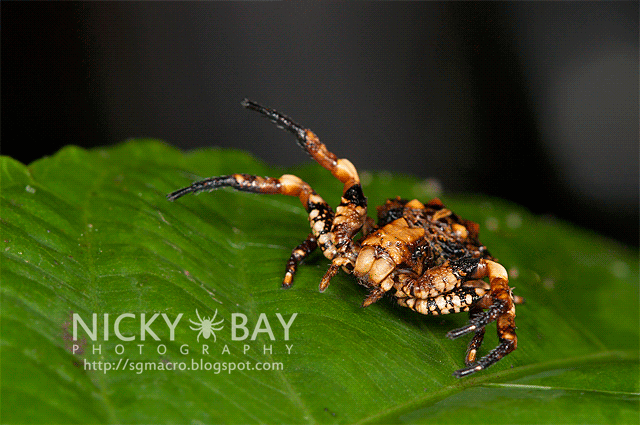
Poop #4: Twin-Horned Poop
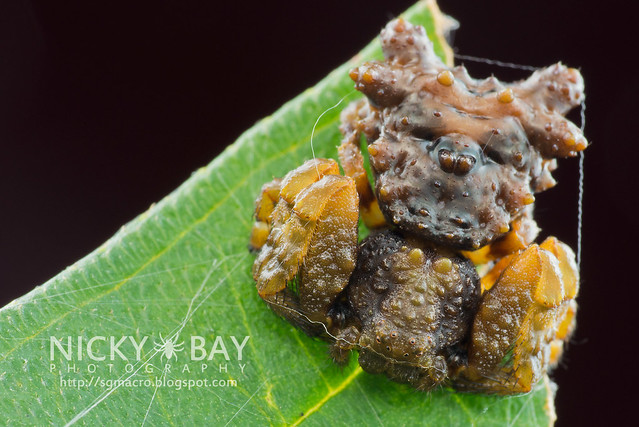

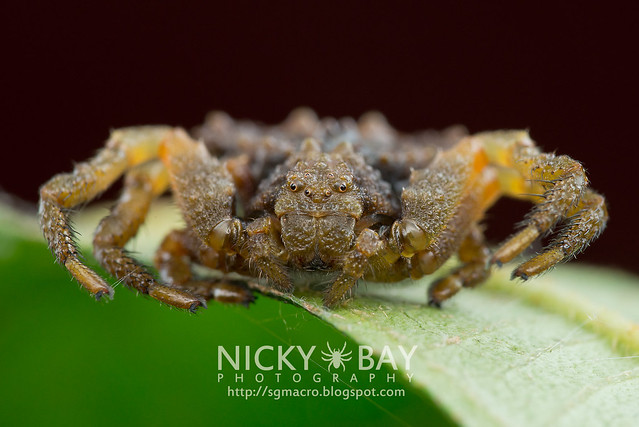
Poop #5: Splatter Poop
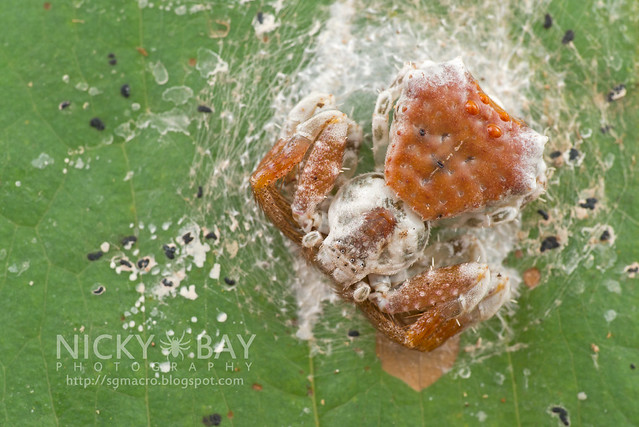
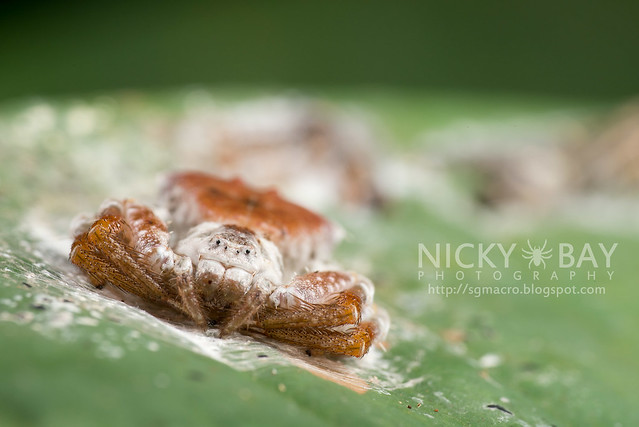
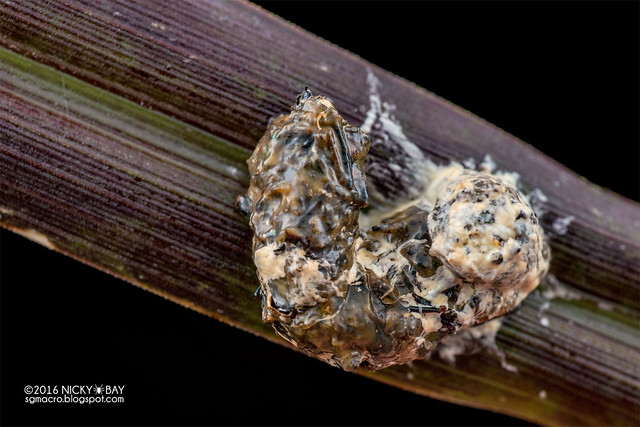

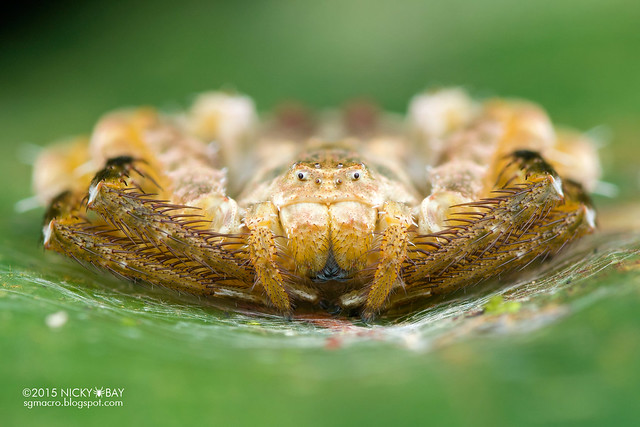
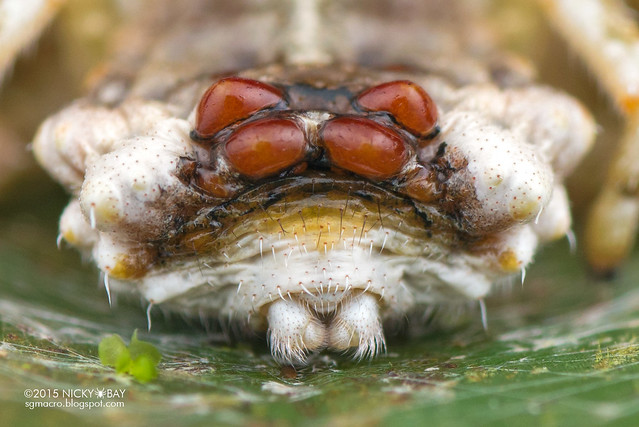
Poop #6: Knobbly Poop
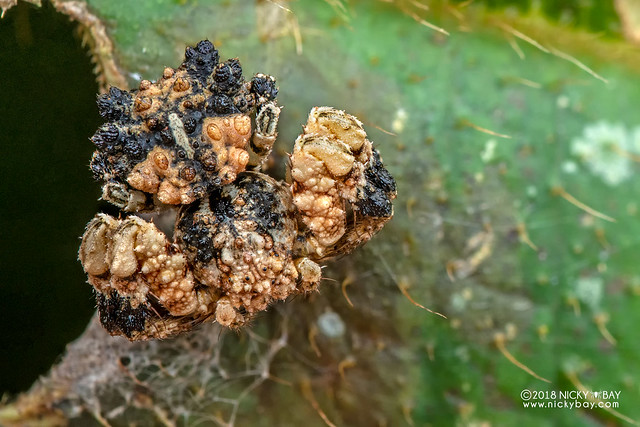
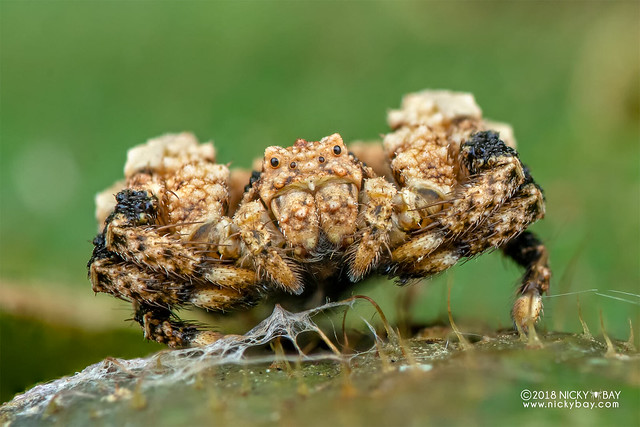
Poop #7: Black Poop

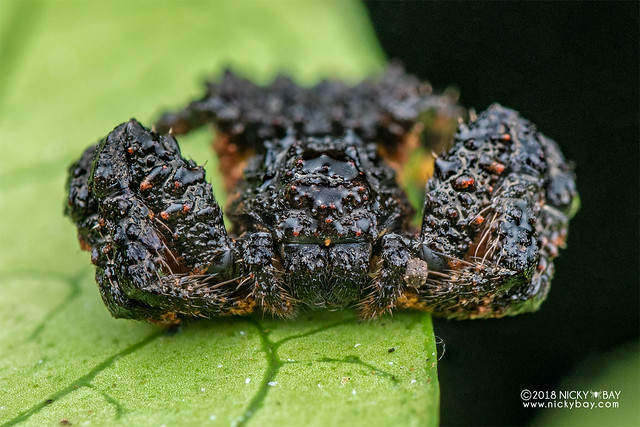
Poop #8: Lemon Poop
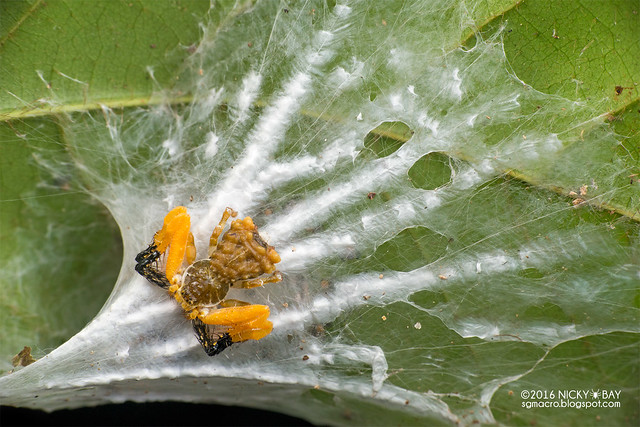

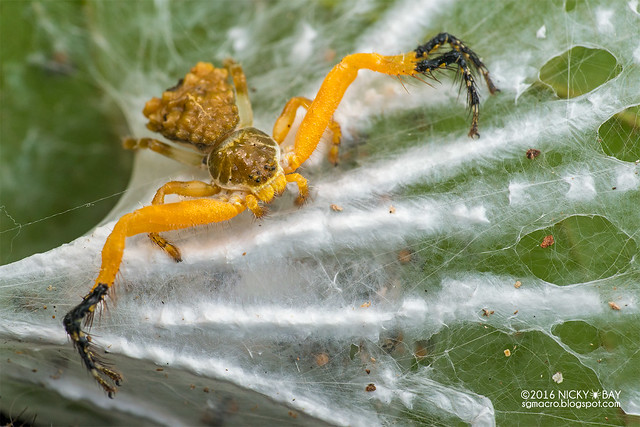
Poop #9: Pulsating Poop
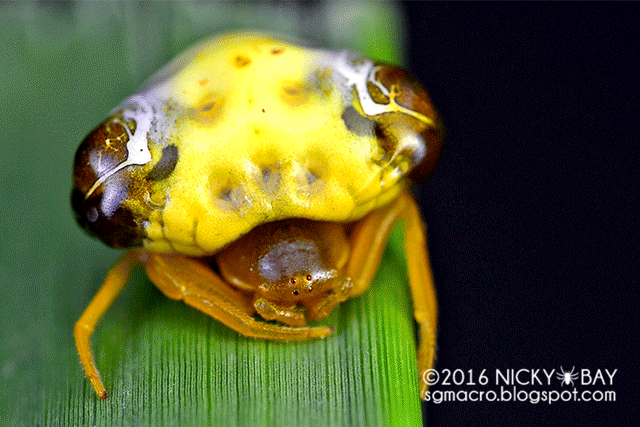
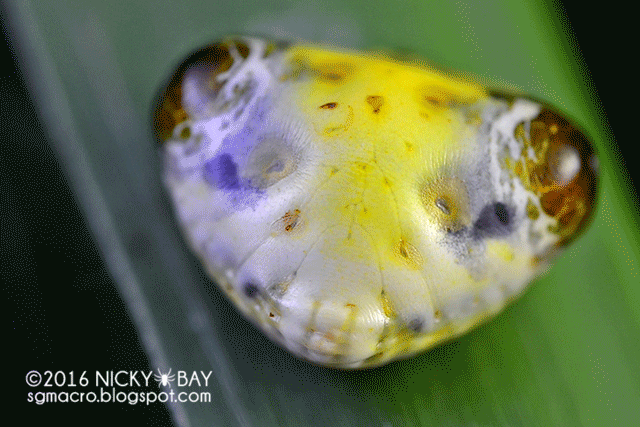
These dung spiders have evolved to use their appearance to their advantage, from deceptive defense to schemingly effective ambush strategies. Next time you see a pile of what looks like poop, look again and hope that it starts to walk!
If you are as fascinated as me in seeing these spiders, join me in the upcoming Macro Photography Bootcamp in Borneo for a week of discovering exotic microfauna! Expect an unforgettable experience!

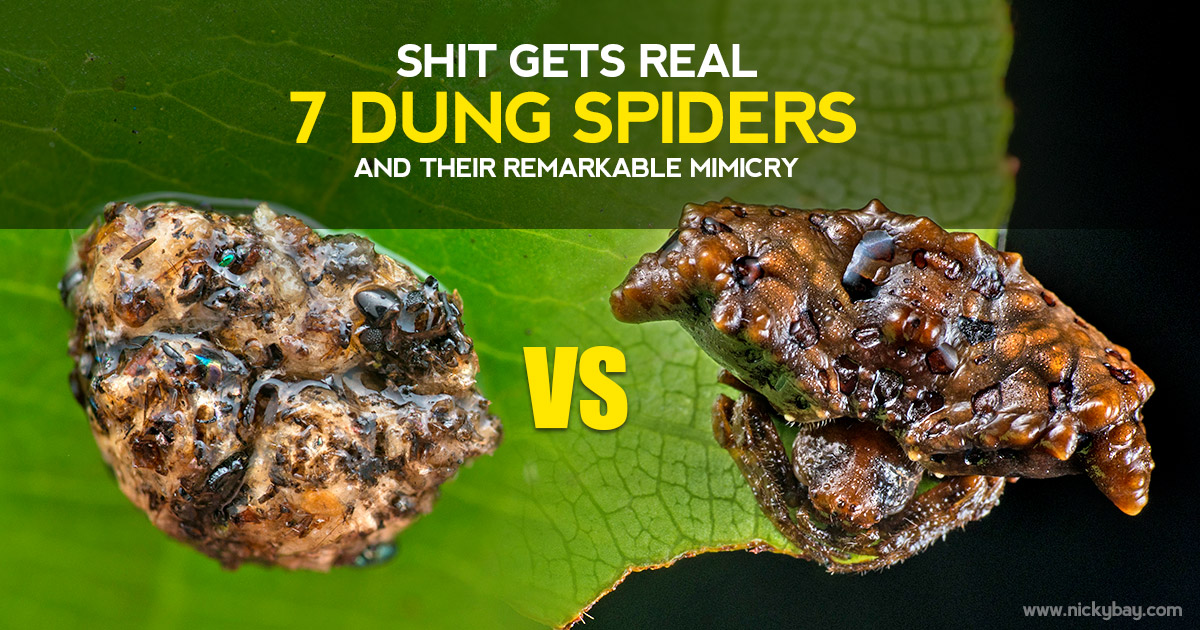

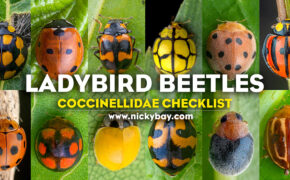
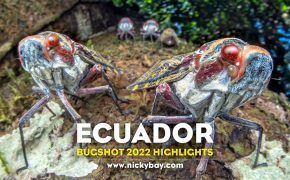
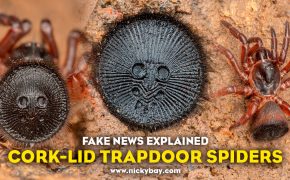












Susan
Nicky,
I have thoroughally enjoyed your photograpy of the bird dung spiders.
While putting a presentation together for a group of 5 teens on a topic of Winter Birds,
I threw in the topic of bird guano, bird poop, bird dung for fun, and stumbled onto your pictures.
Your camera is spectacular. Your angles are perfect!! What fun you must have had travelling the world.
I’m following you now.
Susan
Nicky Bay
Thank you for your compliments, Susan. I’m glad someone enjoyed the poop-ish photos!